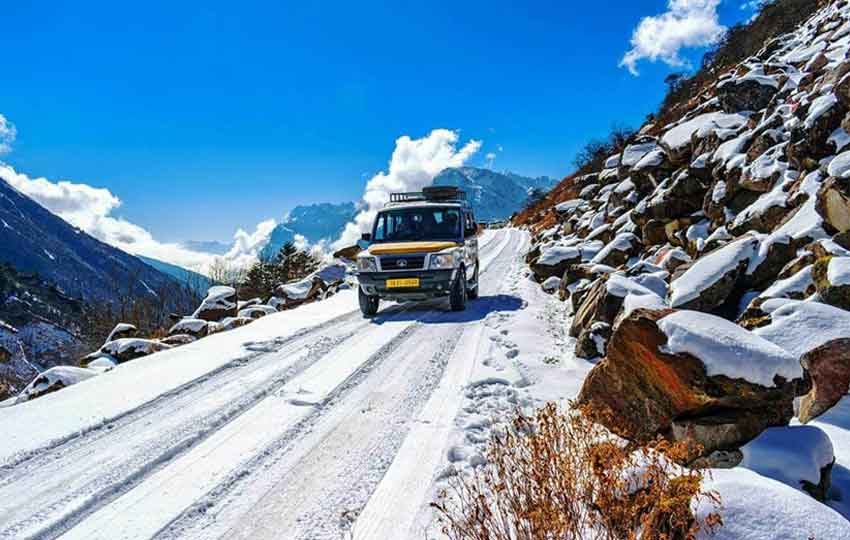
Nestled in the lap of the Eastern Himalayas, Sikkim is a tranquil paradise that offers stunning landscapes, vibrant culture, and unparalleled serenity. From the awe-inspiring Kanchenjunga, the world’s third-highest mountain, to the serene alpine meadows and vibrant monasteries, Sikkim is a traveller’s dream. However, the region’s high altitudes can pose a challenge to visitors, particularly when it comes to altitude sickness. Understanding how to cope with altitude sickness is crucial to ensure a safe and enjoyable adventure in this Himalayan gem.
Understanding Altitude Sickness
Altitude sickness, also known as acute mountain sickness (AMS), occurs when you cannot get enough oxygen from the air at high altitudes. It typically affects people when they ascend too quickly without acclimatising. Common symptoms include headaches, dizziness, fatigue, nausea, and shortness of breath. In Sikkim, where elevations can range from 1,000 metres in the valleys to over 5,000 metres in the mountains, altitude sickness is a genuine concern.
Why It Happens
When you ascend to a higher altitude, the air pressure decreases, leading to less oxygen available for your body to utilise. If your body does not acclimatise, it can result in altitude sickness. Sikkim, with its dramatic elevation changes, requires travellers to be mindful of their ascent rate.
Preparing for Your Trip
Preparation is key to mitigating the effects of altitude sickness. Here are some steps you can take before and during your journey to Sikkim to minimise risks.
Before You Travel
- Consult a Doctor: Before embarking on your trip, consult a healthcare professional, especially if you have pre-existing conditions. They may prescribe medication such as acetazolamide, which can help prevent altitude sickness.
- Physical Fitness: Engage in regular physical activity to improve your overall fitness. A strong cardiovascular system can enhance your ability to acclimatise to high altitudes.
- Research Your Itinerary: Plan your itinerary to include gradual ascents. Avoid flying directly to high-altitude areas if possible. Instead, allow yourself time to acclimatise by starting your journey at lower elevations.
Packing Essentials
- Hydration and Nutrition: Bring a reusable water bottle and plan to drink plenty of fluids. Staying hydrated is essential at high altitudes. Also, pack snacks rich in carbohydrates to maintain your energy levels.
- Clothing: Pack layers of clothing to adapt to varying temperatures. Insulated jackets, woollen hats, and gloves are a must for high-altitude treks.
- Medications and First Aid: Carry a basic first aid kit along with any prescribed medications, including those for altitude sickness if advised by your doctor.
Acclimatisation in Sikkim
Once in Sikkim, proper acclimatisation is crucial. Here are some ways to help your body adjust to the altitude:
Take It Slow
- Gradual Ascent: Ascend slowly, allowing your body to adapt gradually. A common guideline is to avoid sleeping at an altitude more than 300 metres higher than the previous night’s elevation.
- Rest Days: Include rest days in your itinerary, especially after significant altitude gains. Use these days to relax and explore the local culture at a leisurely pace.
Stay Hydrated and Nourished
- Hydration: Drink plenty of water and avoid alcohol and caffeine, which can lead to dehydration. Herbal teas, such as ginger or lemon tea, can be soothing and hydrating.
- Balanced Diet: Consume a diet rich in carbohydrates, as they require less oxygen for metabolism, thus providing energy efficiently.
Monitor Symptoms
- Recognise Early Signs: Be aware of the early symptoms of altitude sickness. If you experience headaches, dizziness, or nausea, it is crucial to take these symptoms seriously.
- Descent if Necessary: If symptoms worsen, descend to a lower altitude immediately. Delaying descent can lead to more severe conditions, such as high-altitude pulmonary oedema (HAPE) or high-altitude cerebral oedema (HACE), which are life-threatening.
Must-Visit Places in Sikkim
While acclimatising, you can explore some of Sikkim’s incredible destinations that are relatively easier on the body in terms of altitude.
Gangtok
The capital city, Gangtok, at an altitude of 1,650 metres, is an excellent place to start. Explore its bustling markets, vibrant monasteries, and the picturesque views of the Himalayas.
Tsomgo Lake
Located at about 3,753 metres, Tsomgo Lake is a mesmerising glacial lake. Ascend gradually and take time to enjoy the stunning scenery and the rich biodiversity around the lake.
Yumthang Valley
Known as the “Valley of Flowers,” Yumthang is situated at 3,564 metres. It offers breathtaking views and a chance to witness the vibrant flora of Sikkim tour packages. Make sure to spend time acclimatising in nearby Lachung before heading to the valley.
Cultural Immersion
Immersing yourself in the local culture can be a delightful distraction while acclimatising. Sikkim’s rich cultural tapestry is woven with Tibetan, Nepalese, and Bhutanese influences.
Visit Monasteries
- Rumtek Monastery: One of the most significant monasteries in Sikkim, Rumtek, is a spiritual haven. Its tranquil atmosphere provides a perfect setting for meditation and reflection.
- Pemayangtse Monastery: Located near Pelling, this ancient monastery offers stunning views of Mount Kanchenjunga. It is a cultural treasure trove with exquisite murals and sculptures.
Engage with Locals
Interacting with the warm and hospitable locals can provide insights into Sikkim’s rich traditions and customs. Attend local festivals, such as Losar or Saga Dawa, to experience the vibrant cultural tapestry firsthand.
Conclusion
Sikkim, with its breathtaking landscapes and rich cultural heritage, is a destination that promises unforgettable experiences. However, to make the most of your journey, understanding and managing the risks associated with altitude sickness is crucial. By preparing adequately, allowing time for acclimatisation, and staying vigilant for symptoms, you can ensure a safe and enjoyable exploration of this Himalayan paradise. As you traverse the serene valleys and majestic peaks, the beauty of Sikkim will unfold, leaving you with memories to cherish for a lifetime.





